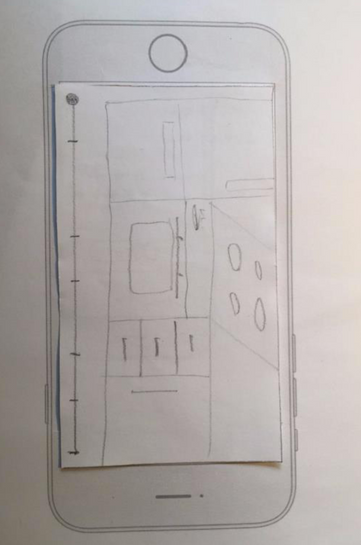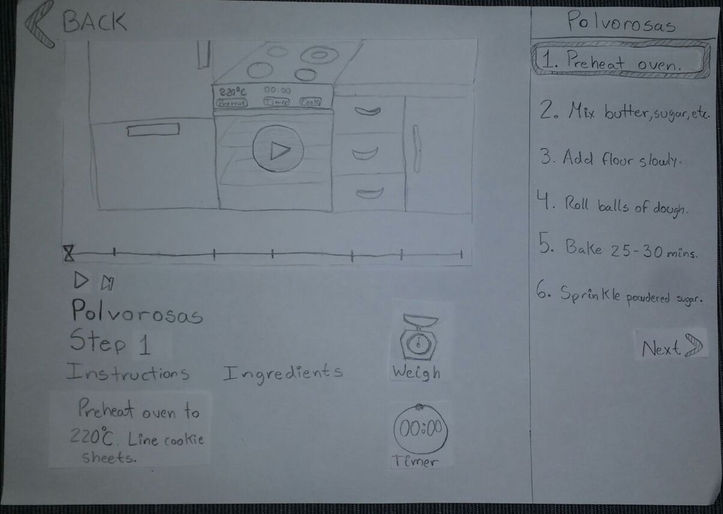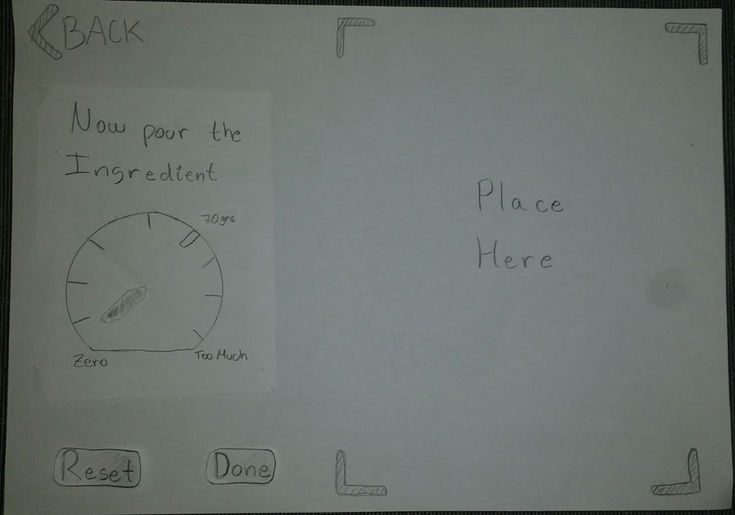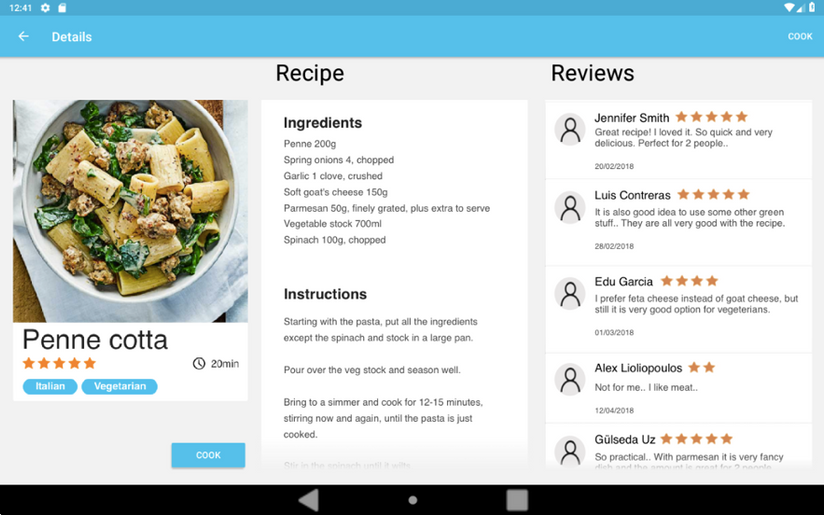echef
eChef was my Human-Computer Interaction semester project, it was almost a master thesis level project.
It consisted of the development of a full solution based on User-Centered Design. The final result was an Android tablet high-fidelity prototype for the search and following of recipes. With the addition of a new interaction, where we pretended the tablet was able to weigh the ingredients. For its development, we followed all the steps needed to develop a new solution like this one: from ethnographic observations and interviews to multiple usability tests with varying degrees of the prototypes’ fidelity.

Job title and description
We were composed of a team of three students, we divided the tasks as equitably as possible.
This meant that we all participated in the interview questions definition and ethnographic observations; we each performed the multiple roles necessary during the usability tests; and we all participated in the prototypes' creation, including the Android Studio coding. This way we were able to guarantee maximum learning from all the different tasks we performed for the development of this solution.
User Centered Design
Original idea
"The project is intended to solve different problems that can appear while following a recipe like dirty hands, different measurement units, missing ingredients, etc. The expected users are young people around 18-30 years old that are technologically savvy and not very experienced cooks. The system will help the users to:
-
Find a recipe
-
Help with finding ingredients
-
Follow recipes effectively and efficiently"
Research, Observation and Interviews
We started doing research on other existing solutions to get an idea of what they were doing, for example, companies like Tasty, which at the time were revolutionizing recipe videos.
We then decided to do 6 ethnographical observations followed by an unstructured interview. We each watched 2 friends that fit the desired profile while performing the three tasks mentioned above.

My quick observations
Paper prototypes
With the data gathered by the three of us from the research, observations, and interviews, we proceeded to have a few brainstorming sessions and proposed to do two different paper prototypes highlighting two different methods of interaction. One focused on voice interactions and the other one on the idea of making the tablet able to weigh ingredients with precision. We divided the work, I focused more on the tablet with weighing capabilities as it was my idea but we all worked on both prototypes.
Paper prototype phone and voice interaction
Paper prototype tablet with scale (Sorry for the bad pictures)
Usability testing
To be able to test the two prototypes we performed usability tests with multiple users, the same we observed and interviewed before. We asked to perform the two tasks explained below, while one of us was taking notes of what was happening, then we asked them to fill in a SUS Questionnaire a UEQ Questionnaire and answer some questions.
-
Task 1: Search for a Venezuelan dessert with the maximum ratings from the users that takes less than 40 minutes to prepare. Once you have found it, please say how much sugar you need to prepare the recipe
-
Task 2: Follow the recipe using the device. When you reach the point of pouring the sugar find the amount needed and weigh it. Then keep following the recipe as you would normally do until the end.
After performing the tests, we compared the results and decided to move forward with an improved version of the tablet version and including the possibility of using voice interactions. A short analysis is available here, you can see part of it on the picture on the right. People really seemed to appreciate the bigger screen and the possibility to weigh the ingredients.

Overall comparison between both paper prototypes
High fidelity prototype
Based on the results from the previous usability tests we decided to develop a high fidelity prototype in Android Studio for an android tablet to be able to test a full functioning prototype of the solution. As a prototype, all of the data was hardcoded and prepared in advance but all of the interactions were real and programmed so that the user could fully use the app. We divided the work between the three of us, I was in charge mainly of the following the recipe with the video section, but we all helped each other.
High fidelity prototype
Usability tests
We performed a similarly structured set of usability tests to validate this latest design but with some different tasks and questions. We were quite happy with the results but as with everything, there was some room for improvement. As the semester was over the project stopped there, but we explained and proposed the possible changes in the following document. Things like making the video area wider, getting rid of the intermediate screen that just shows the recipe, among other things.
Lessons learned
This was the best project I did during my university studies, we literally applied everything we had learned the previous semester into a project where we also learned new things. We also followed completely the true necessary steps to create a new solution and we proved how useful and successful it can be when implemented right. I honestly believe that we could’ve turned this project into a start-up if we wanted, but we moved to different universities the next year.
As a professional, I would like to be part of a group that values all of the steps of User-centered design, from the research, observations, and interviews to the early paper prototypes, the usability tests, and the slow climb to a final developed solution while constantly testing. In this project, I learned how to apply all of these methods and I also practiced my java development skills focusing on developing a functional prototype.
























